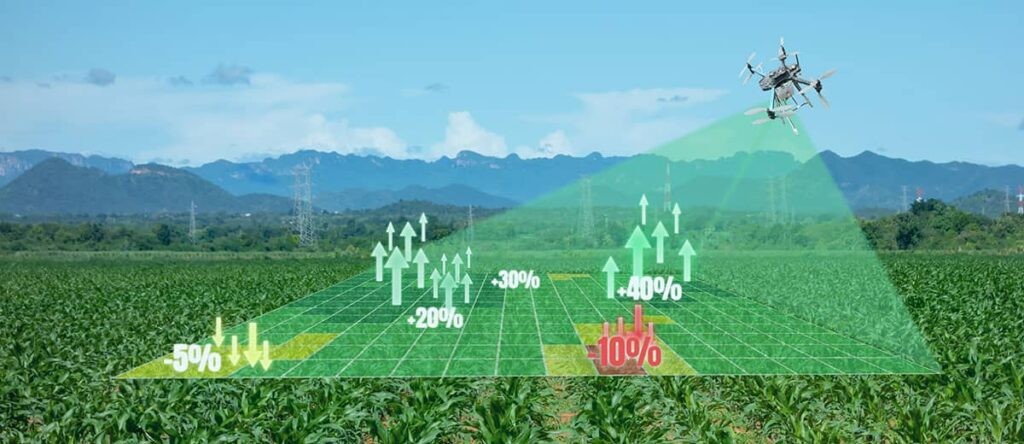How Drones Are Helping Scientists Monitor Climate Change
Climate change is one of the most pressing challenges of our time, and scientists are constantly searching for innovative ways to monitor its impact. Drones, or Unmanned Aerial Vehicles (UAVs), have emerged as a powerful tool for collecting critical environmental data. Their ability to access remote locations, capture high-resolution imagery, and monitor environmental changes in real-time makes them invaluable in climate research.
Introduction
Climate change is one of the most pressing challenges of our time, and scientists are constantly searching for innovative ways to monitor its impact. Drones, or Unmanned Aerial Vehicles (UAVs), have emerged as a powerful tool for collecting critical environmental data. Their ability to access remote locations, capture high-resolution imagery, and monitor environmental changes in real-time makes them invaluable in climate research.
Drones and Climate Data Collection
Traditional climate data collection methods, such as satellites and ground-based sensors, have limitations in coverage and resolution. Drones bridge this gap by providing precise and localized data. They can fly over glaciers, forests, oceans, and disaster-affected areas, capturing real-time information on temperature changes, air quality, deforestation, and melting ice sheets. This data helps scientists make accurate predictions about future climate trends.
Monitoring Glaciers and Polar Ice Caps
One of the most visible effects of climate change is the rapid melting of glaciers and polar ice caps. Drones equipped with thermal imaging and LiDAR (Light Detection and Ranging) technology are used to measure ice thickness, detect cracks, and monitor the rate of ice loss. These insights are crucial in understanding sea-level rise and its potential impact on coastal communities.
Tracking Deforestation and Its Impact
Forests play a critical role in absorbing carbon dioxide (CO₂), but deforestation due to human activities and wildfires is accelerating climate change. Drones help scientists track deforestation patterns, assess tree health, and identify illegal logging activities. High-resolution drone imagery provides real-time updates, allowing researchers and conservationists to take timely action.
Observing Ocean and Marine Ecosystems
Oceans regulate global temperatures and absorb a significant amount of CO₂, but climate change is altering marine ecosystems. Drones are used to monitor coral reef bleaching, rising ocean temperatures, and pollution levels. Underwater drones, or autonomous marine drones, are also deployed to study changes in marine biodiversity and track the movement of endangered species.
Air Quality and Greenhouse Gas Monitoring
Greenhouse gases, such as carbon dioxide and methane, are the main drivers of global warming. Drones equipped with specialized sensors can detect and measure these gases in the atmosphere. Unlike ground-based sensors, drones can reach industrial zones, agricultural areas, and even volcanic regions, providing comprehensive data on air pollution and emissions. This information is vital for formulating effective climate policies.
Disaster Response and Climate Change Adaptation
Extreme weather events, such as hurricanes, floods, and wildfires, are becoming more frequent due to climate change. Drones play a crucial role in disaster response by providing aerial surveys of affected regions. They help emergency teams assess damage, locate stranded individuals, and plan relief operations efficiently. In the long term, drone data helps policymakers develop better climate adaptation strategies.
Advantages of Using Drones for Climate Research
Drones offer several benefits for climate monitoring:
Cost-Effective: Drones are more affordable than satellites and require less manpower.
Real-Time Data Collection: They provide instant insights into environmental changes.
Access to Remote Areas: Drones can reach inaccessible locations like glaciers, deep forests, and active volcanoes.
Minimal Environmental Impact: Unlike large monitoring equipment, drones have a lower carbon footprint.
Challenges and Limitations
Despite their benefits, drones face certain challenges in climate monitoring. Their battery life limits long-duration missions, and extreme weather conditions can affect their performance. Additionally, data collected by drones must be analyzed with high precision, requiring advanced AI and data processing tools. Addressing these challenges through technological advancements will enhance the effectiveness of drones in climate research.
Future of Drones in Climate Science
As drone technology advances, their role in climate research will expand. Improved AI capabilities, longer flight durations, and enhanced sensor technology will make drones even more effective in monitoring environmental changes. Governments, research institutions, and environmental organizations are expected to invest more in drone-based climate monitoring to develop sustainable solutions for combating climate change.
Conclusion
Drones are revolutionizing climate research by providing accurate, real-time, and cost-effective data on environmental changes. From tracking glacier melt to monitoring air pollution and deforestation, drones are proving to be indispensable tools for scientists. As climate change continues to pose global challenges, drones will play a key role in shaping strategies for a sustainable future.
.png)






Leave a Comment
Your email address will not be published. Required fields are marked *